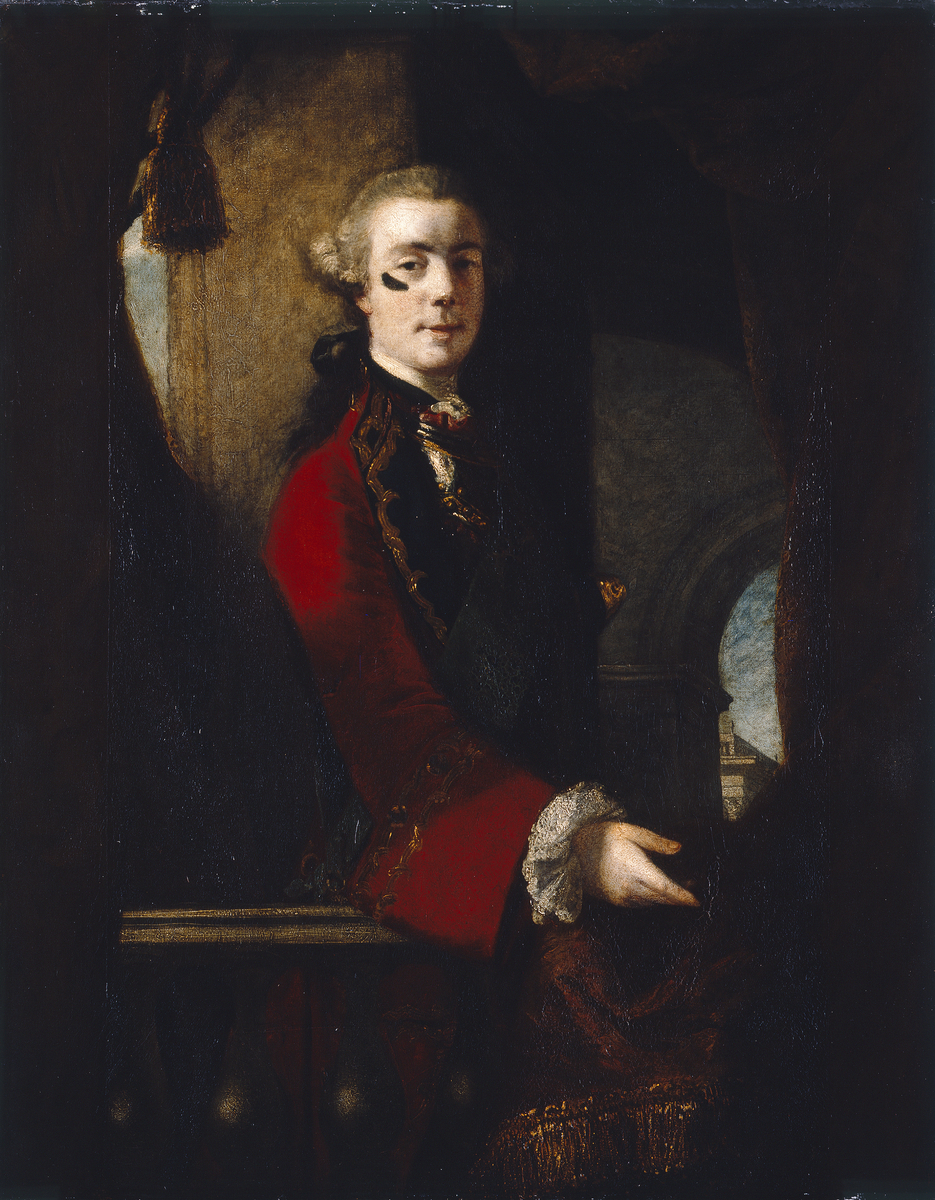Charles, 9th Lord Cathcart
Sir Joshua Reynolds 1723 - 1792
Summary
Three-quarter length portrait of a young man, with his body in three-quarter view to the right, and his head turned to gaze at the viewer. He is depicted standing by a low balustrade, framed by swathes of heavy drapery decorated with fringes and tassels, with his right arm extended and resting on the rail. He wears a grey, curled wig tied with a ribbon and has on his right cheekbone a black silk lunette patch, to cover a scar received at the Battle of Fontenoy in Flanders during the Wars of the Austrian Succession where Cathcart served as aide-de-camp to the Duke of Cumberland. He wears a red coat with black lapels, decorated with gold braid trimming, and a sash across his body from his left shoulder. Round the wrist of his extended hand is a white lace ruff. His glittering breastplate can just be seen beneath his coat. The gold handle of his sword is just visible behind his left side. In the background are shadowy architectural forms, with part of an archway to the right through which can be seen the corner of a distant building.
Display Label
Gallery text panel Face and Place Portraiture and Landscape in the 18th Century A dramatic growth in Britain's wealth during the 1700s brought about an increased demand for art and design. Hundreds of grand houses were built or improved and many were filled with impressive private collections. The prominent display of paintings and decorative arts demonstrated their owners' status and taste. Portraiture became particularly fashionable, leading to rising numbers of 'face painters' and to an increase in the quality of their work. The ability to capture a likeness was most important but artists could also enhance a sitter's image with qualities such as prestige, wisdom or power. New public exhibitions gave artists a shop window and the Royal Academy, founded in 1768, organised the most important annual show. Amid this developing climate of enthusiasm for art, landscape painting also began its remarkable evolution. Landscape arose from a need to accurately record views and was first thought to be of little artistic merit. But as painters grew in confidence during the later 1700s it was treated with more creativity and seriousness, establishing a distinctive tradition in British art.
Object Name
Charles, 9th Lord Cathcart
Creators Name
Date Created
1753-55 (circa)
Dimensions
Canvas: 124cm x 99cm
Frame: 144cm x 118cm
accession number
1981.36
Place of creation
England
Support
canvas
Medium
oil paint
Credit
Purchased with the assistance of the Victoria & Albert Museum Purchase Grant Fund and the National Heritage Memorial Fund
Legal
© Manchester Art Gallery

